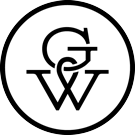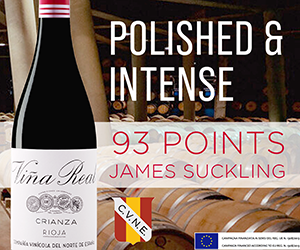Much has been written already about the 2008 vintage, for different reasons including the lower yields (15 to 25% less), oïdium pressure in Spring, ...It is true that weather conditions in France were not classical, but we must bear in mind that France is made of many different winegrowing regions and that in Languedoc, 2008 vintage is of excellent quality and many of our wines appear to have good ageing potential.
Much has been written already about the 2008 vintage, for different reasons including the lower yields (15 to 25% less), oïdium pressure in Spring, ...It is true that weather conditions in France were not classical, but we must bear in mind that France is made of many different winegrowing regions and that in Languedoc, 2008 vintage is of excellent quality and many of our wines appear to have good ageing
potential.
In spite of a mild and dry winter followed by a rather fresh and humid spring, the maturity month was
perfect for our grape varieties, with a pronounced day-night temperature difference (thermal amplitude), which translates into a great concentration of aromas and colour.
Like in 2007, our efforts in terms of forecasting, anticipation, prevention and above all, the search for the optimum maturity, have paid off. My team was made of my permanent winemakers Michel Laye, Arnaud Bergeron, Guillaume Borrot, Sébastien Perez and David Costa, and also the flying winemaker David Ciry.
2008 weather conditions
Our vineyards are found in two main geographical areas: PEZENAS/MONTAGNAC and LIMOUX.
Here are the highlights of the vintage.
PEZENAS / MONTAGNAC
WINTER:
Rain deficit and mild temperatures
SPRING: our spring was variable in terms of temperatures, with days or even weeks with warm
temperatures, followed by fresh days or weeks.
APRIL: rain deficit; ups and downs in temperatures: first 10 days superior to average, second
decade lower, then last 10 days superior again.
MAY: very humid (2 to 3 times more rain than normal) with a very warm beginning of the month.
JUNE: the first half was very fresh, then very warm. Rains were superior to normal standards.
SUMMER:
JULY: normal conditions
AUGUST: dry months with irregular temperatures
SEPTEMBER: warm and rainy at the beginning of the month (with a big storm on September 4, and hail around Pézenas; our vines were not affected). The rest of the month was fresh. The thermal amplitude (the difference between the average minimum and maximum temperatures) was very important during the maturity month and beneficial to the development of the aromas on the white wines and on the aromas and the colour on the reds.
August : 10°C
September : 15°C
The overall rainfall of the 2008 vintage was the lowest since 2000. The average or overall temperature was similar to 2004.
Summary Pézenas/Montagnac
Rain deficit in winter. Rainy spring. Moderate temperatures in summer, but cool temperatures at night favouring the aromatic and phenolic maturity of our grapes.
LIMOUX
WINTER:
High rain deficit.
SPRING:
Rather cool, with ups and downs in temperatures.
MAY: very humid
JUNE: very fresh temperatures in the first half of the month, then very warm. Rainfall higher than
normal.
SUMMER:
JULY: temperature deficit
AUGUST: temperature deficit ; little rainfall.
SEPTEMBER: warm weather at the beginning of the month, and then cooler. No rain at all. Thermal amplitude was very important during the months of August and September, respectively 13 and 18°C.
Summary Limoux:
Rain deficit in winter. Wet spring. Cool and dry summer.
Outlook of the 2008 vintage, variety by variety
As said before, we had unusual weather conditions, with a dry winter, a wet spring, temperatures going up and down, etc... Harvest started on August 25 (with Sauvignon Blanc) and ended on October 29 (with Cabernet Sauvignon): 2 full months. On average, we had a 2-week delay compared to our normal harvest schedule. In the vineyard, the highlights are: a strong decrease of the yields, on average - 22%, for all grape varieties. This drop is explained by a disrupted flowering and a very wet spring. A strong oïdium pressure at the end of the winter and during spring required us to more alert than ever. A vintage during which our expertise and innovative approaches were essential.

 quicksearch
quicksearch





